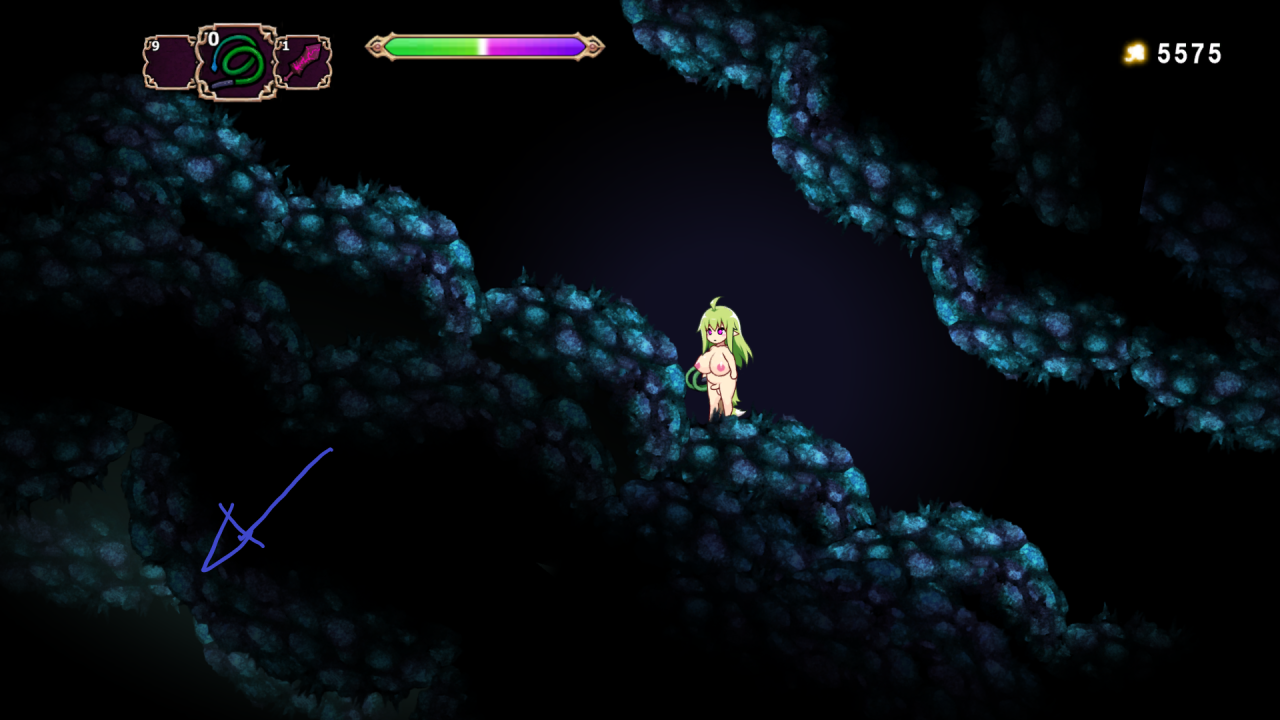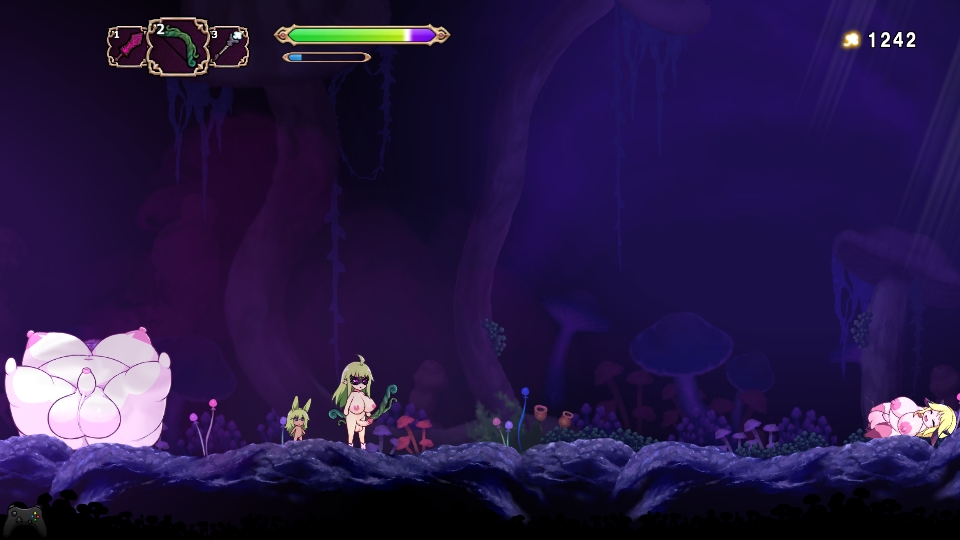Futaken Valley, a hidden gem in the heart of nature, beckons with its rich tapestry of history and culture. As we embark on this exploration, we uncover the valley’s significant past, lush geographical features, and vibrant traditions that breathe life into the landscape.
This enchanting location is not just a geographical wonder, but a cultural mosaic that tells the stories of its people, their customs, and the evolution of their community through time. With its diverse flora and fauna, and a tapestry of economic activities, Futaken Valley reveals itself as a destination steeped in both natural beauty and historical significance.
Historical Background of Futaken Valley

Futaken Valley is a region imbued with rich historical significance that reflects the evolution of its cultural identity through various periods. This valley has been a silent witness to the passage of time, serving as a backdrop for notable events that have shaped its landscape and the lives of its inhabitants. Understanding its history provides insights into the enduring legacy and the transformations that have occurred over centuries.
The historical significance of Futaken Valley can be traced back to its early habitation, where it served as a crucial passage between various communities. Over the years, it has been the site of numerous events, from ancient trade routes to modern-day gatherings, each leaving an indelible mark on its cultural tapestry. The valley’s name itself has evolved through time, reflecting the linguistic and cultural transformations influenced by various ruling empires and migrating tribes.
Notable Historical Events
Several key events have occurred in Futaken Valley that have contributed to its historical narrative. These events not only highlight the valley’s importance but also its role in the broader socio-political context of the region.
- The Great Trade Route Establishment: In ancient times, Futaken Valley was a pivotal point along trade routes that facilitated commerce between different civilizations. This influx of goods and culture enriched the valley’s historical significance.
- The Battle of Futaken: A significant conflict took place in the valley during the early medieval period, where local tribes vied for control over the fertile land. This battle marked a turning point in local governance and territorial claims.
- Cultural Festivals: The valley has been home to various cultural festivals that date back centuries, celebrating agricultural cycles and communal unity, which have fostered a strong sense of identity among residents.
Etymology and Cultural Implications
The evolution of the name “Futaken” is intertwined with the valley’s rich history. The term is believed to derive from ancient dialects, which relate to the valley’s geographical features and its significance as a gathering point for various cultures.
This etymological journey reflects deeper cultural implications, as the name has been a vehicle for storytelling, identity, and heritage. It serves as a reminder of the relationships forged through trade, conflict, and cooperation among diverse populations.
“The name Futaken embodies the spirit of resilience and unity that has characterized its people through the ages.”
The valley’s name has also been adapted in various forms over time, each iteration preserving a fragment of its history and contributing to the legacy that current generations inherit. The study of its name reveals much about the valley’s historical interactions and the transformations that have occurred within its borders.
Geographical Features

Futaken Valley is characterized by its striking geographical layout, which comprises a diverse range of terrains that contribute to its unique ecological environment. Nestled between towering mountains and expansive wetlands, the valley showcases a harmonious blend of natural beauty and rich resources.
The terrain of Futaken Valley is predominantly mountainous, with rugged hills and steep slopes interspersed with fertile plains. The region is endowed with an array of natural resources including freshwater streams, mineral-rich soils, and dense forests, making it a crucial area for both local inhabitants and wildlife. The topography varies significantly, resulting in distinct microclimates that support diverse ecosystems.
Topographical Features
The topography of Futaken Valley plays a significant role in shaping its climate and biodiversity. The following table illustrates the key features of the valley’s geographical layout:
| Feature | Description |
|---|---|
| Mountain Ranges | Surround the valley, providing natural barriers and influencing weather patterns. |
| Fertile Plains | Ideal for agriculture, these plains are nourished by the runoff from surrounding mountains. |
| Wetlands | Support a diverse range of flora and fauna, acting as crucial ecosystems for local wildlife. |
| Freshwater Streams | Flowing from the mountains, these streams are vital for irrigation and drinking water. |
The valley’s unique flora and fauna contribute significantly to its ecological richness.
Flora and Fauna
Futaken Valley is home to a variety of plant and animal species that are uniquely adapted to the specific conditions of the region. The diverse habitats ranging from forests to wetlands provide sustenance and shelter for numerous species.
The flora includes a mix of hardwoods and evergreens, with notable species such as oak, maple, and various conifers thriving in the forested areas. The valley’s wetlands are dotted with reeds, sedges, and a variety of flowering plants, which not only enhance its beauty but also play a crucial role in the local ecosystem.
The fauna of Futaken Valley is equally diverse, featuring both terrestrial and aquatic species. Among the notable fauna are:
- Mountain Goats: Adapted to steep terrains, these mammals are a common sight in the higher elevations.
- Bird Species: Various birds, including eagles and herons, inhabit the diverse ecosystems, contributing to the valley’s biodiversity.
- Amphibians: Frogs and salamanders thrive in the wetland areas, acting as important indicators of ecological health.
The rich biodiversity of Futaken Valley serves as a testament to the intricate interplay between its geographical features and the life forms it supports.
The interplay of these geographical and ecological aspects creates a vibrant habitat that is not only crucial for the survival of many species but also enriches the cultural heritage of the local communities.
Cultural Significance
The inhabitants of Futaken Valley boast a rich tapestry of traditions and customs that reflect their deep-rooted cultural heritage. These practices have been passed down through generations, shaping the identity of the community and fostering a sense of belonging among its members. The valley serves as a living museum of cultural expressions, where each ritual and celebration encapsulates the essence of the local way of life.
Central to the cultural landscape of Futaken Valley are its vibrant festivals and events. These gatherings not only mark significant seasonal changes but also celebrate the community’s agricultural practices, historical events, and spiritual beliefs. The festivities are characterized by lively music, traditional dance, and communal feasting, inviting both locals and visitors to partake in the joyous atmosphere.
Local Festivals and Events
Futaken Valley hosts several annual festivals that highlight its cultural richness. Each festival serves as a vital part of the community’s social fabric, reinforcing bonds among residents and honoring their ancestors.
- Harvest Festival: Celebrated in the autumn, this festival marks the end of the harvest season. It involves communal feasts where families share their bounty, and traditional dances are performed to thank the gods for a fruitful yield.
- Spring Equinox Festival: This event signifies renewal and hope. The community engages in rituals aimed at inviting prosperity for the upcoming planting season, including offerings and prayers at sacred sites.
- Winter Solstice Gathering: A time for reflection and unity, this gathering involves storytelling sessions where elders share tales of the valley’s history, reinforcing cultural identity and continuity.
The cultural artifacts found within Futaken Valley provide insight into the community’s beliefs and practices. These items are not merely relics; they embody the stories and values of the people.
Cultural Artifacts and Their Meanings
The valley is home to various artifacts that tell the story of its inhabitants’ cultural evolution. Each artifact holds significance, representing the collective memory and identity of the community.
- Handwoven Textiles: These textiles often feature intricate patterns and colors that symbolize different aspects of life, such as fertility, nature, and community.
- Traditional Pottery: Crafted using ancient techniques, the pottery is decorated with motifs that convey local legends and spiritual beliefs, serving both practical and ritualistic purposes.
- Wooden Masks: Used in festivals, these masks represent ancestral spirits and are integral to traditional dances, helping to bridge the connection between the living and the spiritual world.
“The preservation of these cultural artifacts ensures that the history and essence of Futaken Valley continue to inspire future generations.”
Through these traditions, festivals, and artifacts, the residents of Futaken Valley celebrate their identity and heritage, weaving a narrative that is both unique and universally human.
Economic Activities
Futaken Valley, with its rich resources and fertile land, is a hub of diverse economic activities that have evolved significantly over time. The valley’s economy is primarily based on agriculture, supplemented by other practices that cater to both local needs and market demands. Understanding these activities provides insight into the livelihoods of the residents and the overall economic landscape of the region.
The agricultural sector remains the cornerstone of Futaken Valley’s economy. Its fertile soil, enhanced by a favorable climate, supports a variety of crops and livestock farming. Traditional practices have laid the foundation for modern agricultural techniques, creating a blend of old and new that drives productivity.
Agricultural Practices and Major Crops
Agriculture in Futaken Valley is characterized by both subsistence and commercial farming. The primary crops cultivated in the region include:
- Rice: As a staple food, rice is grown extensively in the valley, with fields often flooded to ensure optimal growth conditions.
- Corn: Another significant crop, corn serves as both food for livestock and a source of income for farmers.
- Fruits: The valley is known for producing a variety of fruits, including apples, peaches, and berries, which are popular in local markets and beyond.
- Vegetables: Diverse vegetables like tomatoes, cucumbers, and bell peppers thrive in the region, contributing to both local diets and commercial sales.
The combination of these crops not only sustains the local population but also provides an important economic exchange with neighboring areas.
Historically, agricultural practices in Futaken Valley relied heavily on traditional methods, which emphasized crop rotation and organic fertilizers, contributing to sustainable soil health. In contrast, modern developments have introduced advanced farming techniques such as precision agriculture, which utilizes technology for better yield predictions and resource management.
The integration of technology into farming has resulted in improved productivity and efficiency, contrasting significantly with the more labor-intensive methods of the past. For example, the introduction of irrigation systems has allowed for multiple cropping seasons in a year, promoting economic stability for farmers.
“Modern agricultural practices in Futaken Valley have not only enhanced productivity but have also provided farmers with better tools for sustainability and market access.”
In summary, the economic activities in Futaken Valley, particularly in agriculture, showcase a remarkable transition from historical practices to modern advancements, reflecting the resilience and adaptability of its farmers in the face of changing economic landscapes.
Tourism and Attractions

Futaken Valley, with its stunning landscapes and rich cultural heritage, has emerged as a captivating destination for tourists seeking both adventure and tranquility. The valley offers a unique blend of natural beauty and vibrant local culture, making it an ideal spot for travelers from all walks of life. Visitors are drawn by the promise of scenic vistas, historical landmarks, and engaging activities that showcase the essence of this enchanting locale.
Key attractions in Futaken Valley include breathtaking natural wonders, historical sites, and local artisan markets. These elements not only highlight the valley’s historical and cultural significance but also offer tourists memorable experiences that immerse them in the local lifestyle.
Major Attractions and Landmarks
Futaken Valley boasts several notable attractions that cater to diverse interests. Each site reflects the region’s unique identity and offers opportunities for exploration and discovery.
- The Futaken Waterfall: A stunning cascade that provides a picturesque backdrop for photography and a refreshing dip in its clear waters.
- Ancient Temples: These historic sites offer insight into the valley’s spiritual heritage and architectural prowess of bygone eras.
- Local Artisan Markets: Vibrant markets where visitors can purchase handmade crafts, textiles, and local delicacies, giving a taste of the valley’s rich culture.
- Scenic Hiking Trails: Numerous trails weave through the valley, allowing trekkers to experience the breathtaking flora and fauna native to the region.
Recommended Activities and Experiences
Tourists looking to make the most of their visit to Futaken Valley will find a plethora of activities designed to enhance their experience and connection with the area.
- Guided Nature Tours: Engage with local guides who share insights about the valley’s ecosystem and wildlife while leading tours through stunning landscapes.
- Local Cuisine Workshops: Participate in cooking classes that focus on traditional dishes, providing a hands-on understanding of the culinary heritage.
- Photography Excursions: Capture the beauty of Futaken Valley with guided tours that take you to the most picturesque spots during the best lighting conditions.
- Cultural Performances: Attend local festivals or performances that showcase traditional music and dance, offering a glimpse into the vibrant cultural tapestry of the valley.
Accommodation Options
Finding a comfortable place to stay is essential for making the most of your time in Futaken Valley. The area offers a variety of accommodation options to cater to different budgets and preferences. Below is a table showcasing some of the best places to stay.
| Accommodation | Price Range (per night) | Features |
|---|---|---|
| Valley View Hotel | $100 – $150 | Scenic views, free breakfast, Wi-Fi, pool |
| Futaken Lodge | $80 – $120 | Cozy rooms, local cuisine, hiking access |
| Eco-Resort Retreat | $120 – $200 | Sustainable practices, spa services, guided tours |
| Backpacker’s Hostel | $20 – $50 | Affordable, shared facilities, communal kitchen |
Environmental Considerations

Futaken Valley, with its stunning landscapes and rich biodiversity, faces several environmental challenges that threaten its delicate ecosystem. As the region experiences increased human activity, the consequences of pollution, habitat destruction, and climate change become more pronounced. Understanding these challenges is crucial for the preservation of the valley’s natural beauty and ecological integrity.
The environmental challenges in Futaken Valley are primarily driven by tourism development, agricultural expansion, and urbanization. Increased foot traffic in sensitive areas leads to soil erosion and degradation of natural habitats. Pollution from nearby agricultural runoff contaminates water sources and affects local wildlife. Moreover, climate change poses severe risks, including altered precipitation patterns, which can affect both the ecosystem and local agricultural practices.
Conservation Efforts
To combat these challenges, a series of conservation efforts have been initiated in Futaken Valley. These efforts focus on habitat restoration, pollution control, and community engagement to ensure a sustainable balance between development and conservation.
One notable initiative is the establishment of protected areas within the valley. These designated zones serve as wildlife sanctuaries and help preserve native flora and fauna, allowing ecosystems to regenerate naturally. Local organizations are also involved in reforestation projects, planting native trees to restore damaged areas and enhance biodiversity. Furthermore, regular clean-up drives engage community members in environmental stewardship, fostering a sense of responsibility towards the valley’s natural resources.
Sustainable Tourism Practices
Sustainable tourism practices are vital for protecting Futaken Valley’s ecosystem while still allowing visitors to enjoy its beauty. Implementing these practices can minimize environmental impact and ensure that tourism contributes positively to the local community and environment.
Key strategies include:
- Eco-Friendly Accommodations: Promoting lodges and hotels that utilize sustainable energy sources, waste management systems, and water conservation practices.
- Guided Nature Tours: Encouraging visitors to participate in guided tours that educate them on local ecosystems and wildlife, promoting respectful interactions with nature.
- Wildlife Monitoring Programs: Engaging tourists in citizen science projects that contribute to local wildlife monitoring efforts, allowing them to actively participate in conservation.
- Local Produce Promotion: Supporting local businesses that sell sustainably sourced food products, thereby reducing carbon footprints associated with transporting goods.
- Visitor Education: Providing information on responsible tourism practices, such as respecting wildlife, staying on designated paths, and minimizing waste.
By adopting these sustainable tourism practices, Futaken Valley can protect its unique ecological landscape while also providing a fulfilling experience for visitors, ensuring that both nature and community thrive together.
Personal Stories and Testimonials
The essence of Futaken Valley lies not only in its breathtaking landscapes and rich history but also in the heartfelt stories of those who call it home. Residents have witnessed the valley’s transformation over the years, often sharing memories that encapsulate the deep-seated connection they have with the land and each other. These personal narratives shine a light on what it truly means to live in this remarkable valley, offering insight into the local lifestyle, traditions, and the unique experiences that shape their identity.
The impact of changes in Futaken Valley extends far beyond the physical landscape; it has influenced the community’s lifestyle, traditions, and social dynamics. As modernity intertwines with tradition, stories from locals reveal a tapestry of emotions and experiences, showcasing resilience, adaptation, and the unwavering charm of daily life in the valley.
Stories from the Heart
In the heart of Futaken Valley, personal testimonies illustrate the unique experiences of its residents. Each story reflects the intimate bond with the valley, emphasizing its charm and the richness of community life.
-
“Growing up surrounded by the mountains was like living in a painting. The seasons change, but the beauty remains constant,” shares Anika, a lifelong resident, who recalls her childhood adventures exploring the nearby trails.
-
“The valley has seen many changes, but our traditions keep us grounded. Every year, we celebrate the harvest festival, which brings everyone together,” notes Raj, a local farmer who emphasizes the importance of communal events in preserving cultural heritage.
-
“I moved here for the peace and quiet, but I found a vibrant community. The friendships I’ve built are as precious as the landscapes themselves,” reflects Maya, a recent transplant, highlighting the welcoming nature of the valley’s inhabitants.
As the valley evolves, the stories shared by residents also highlight the challenges they face and their aspirations for the future. The testimonies reveal a deep appreciation for the environment and a commitment to maintaining the valley’s natural beauty amidst modernization.
Challenges and Changes, Futaken valley
The community has not only adapted to changes in the valley but has also faced various challenges that have impacted their way of life. These challenges have shaped their narratives, revealing the resilience of the residents.
-
“The influx of tourists has changed our landscape, but we embrace it as long as it respects our culture,” states Kiran, a local shop owner, emphasizing the balance between economic growth and cultural preservation.
-
“With climate change affecting our farming, we are learning to adapt and innovate. We share techniques and ideas to ensure our crops thrive,” explains Arun, a young farmer who represents the new generation’s approach to sustainability.
-
“The younger generation is moving to cities for better opportunities, but we are working to create sustainable jobs here so they feel they can return,” shares Meera, a community leader focused on grassroots initiatives.
These narratives collectively paint a portrait of Futaken Valley as a place rich in history and community spirit, where each individual contributes to the larger story of the valley. The voices of the residents breathe life into the valley’s charm, echoing the sentiment that while change is inevitable, the heart of the community remains steadfast.
Final Conclusion: Futaken Valley
In conclusion, Futaken Valley is more than a picturesque landscape; it is a living narrative of resilience and community spirit. As we reflect on its cultural richness, economic evolution, and environmental challenges, we are reminded of the importance of preserving such treasures for future generations. Whether through personal stories or breathtaking sights, Futaken Valley continues to enchant and inspire all who venture into its embrace.
If you’re looking for engaging ways to spend your free time, exploring permainan gratis can be an excellent option. These free games not only provide entertainment but also allow you to connect with friends and family. With a wide variety of genres available, you’re sure to find something that suits your taste and keeps you engaged for hours.
Looking for ways to unwind without spending a dime? You can explore a variety of permainan gratis that offer engaging experiences. These games cater to different preferences, ensuring that there’s something enjoyable for everyone. Whether you’re into puzzles or action-packed adventures, free games provide the perfect opportunity to have fun while saving money.

